Alcoholic, drug addict, and a womanizer, Amedeo Clemente Modigliani had an early death (age 35) by tuberculosis. During his turbulent life, Modigliani went largely unrecognized, and he staged only one exhibition, but his work now achieves eye-watering prices at auction. Modigliani’s mother, Eugénie Garsin, born and raised in Marseille, was descended from an intellectual, scholarly family of Sephardic ancestry that for generations had lived along the Mediterranean coastline. Fluent in many languages, her ancestors were authorities on sacred Jewish texts and had founded a school of Talmudic studies. Family legend traced the family lineage to the 17th-century Dutch philosopher Baruch Spinoza. The family business was a credit agency with branches in Livorno, Marseille, Tunis, and London. When he first arrived in Paris, in 1906, he wrote home regularly to his mother, he sketched his nudes at the Académie Colarossi, and he drank wine in moderation. He was at that time considered by those who knew him as a bit reserved, verging on the asocial. Within a year of arriving in Paris, however, his demeanor and reputation had changed dramatically. He transformed himself from a dapper academician artist into a sort of prince of vagabonds.
In the spring of 1917, the Russian sculptor Chana Orloff introduced him to a 19-year-old art student named Jeanne Hébuterne, an Acadèmie Colarossi student. By 1917, Modigliani was in the darkest depths of addiction. Even if art historians have argued that it was a result of his worsening tuberculosis – a kind of self-medicated care – his behavior was no longer unpredictable but wilfully destructive. Despite her family’s objections, soon they were living together. French painter of the later 19th and early 20th centuries, her works are considered as expressionists. However, in the History of Art, Hébuterne is part of the group of women artists who are only remembered as the wife, lover, or muse of someone (unfortunately)! She was the second child to Achille Casimir Hébuterne who worked at Le Bon Marché, a department store, and Eudoxie Anaïs Tellier Hébuterne. Jeanne was introduced to the artistic community of Montparnasse by her older brother André Hébuterne, who was also a painter. Jeanne was always described as a gentle, shy, quiet, and delicate young woman. She was incredibly talented.
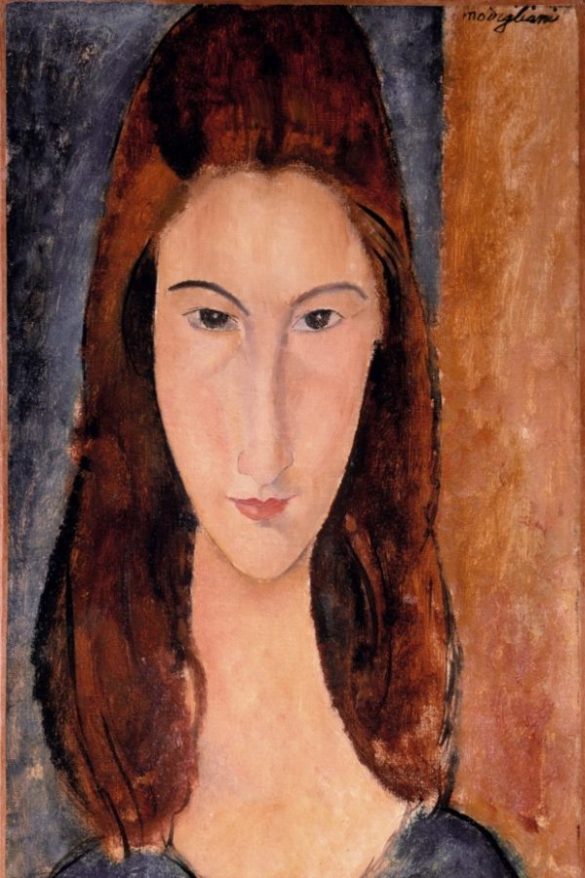
They fell deeply in love and began an affair. Moving in together, Héburtene became the central subject of Modigliani’s late-career, and the closest he ever came to a conventional relationship. In the spring of 1918, they left Paris for Nice. During that time they had a busy social life with many friends, including Pierre-Auguste Renoir and Pablo Picasso. While in Nice, their daughter, Jeanne Modigliani, was born. Modigliani already had a son from his relationship with Simone Thiroux, Gérard Thiroux, and at least two other illegitimate children. When they returned to Paris a year later, Jeanne was pregnant again. By then Modigliani was suffering from tuberculous meningitis and his health was deteriorating badly.
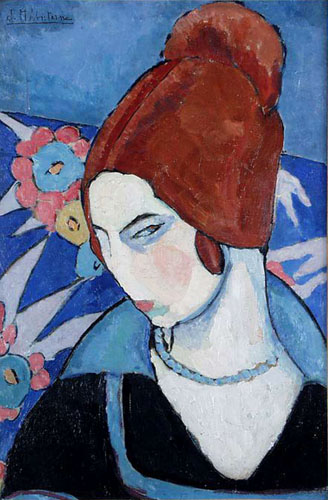
During the latter stages of Héburtene’s pregnancy, her disapproving family discovered the severity of Modigliani’s illness and denied her permission to marry him. Modigliani had lost all his friends, and took to roaming the streets of Paris every night, drunk and high. One night, in January 1920, the now estranged (and still pregnant) Héburtene was called to his apartment, where he died in her arms of tuberculosis. Hébuterne returned to her parents’ house, but she could not overcome the loss of her love and threw herself at 3 a.m. out of the fifth-floor apartment window at just 20 years old, only two days after Modigliani’s death; killing not only herself, but her unborn child too (she was eight months pregnant!). She is buried first in the cemetery of Bagneux and only after ten years the family accepts the exhumation and reburial with Modigliani in the Père Lachaise cemetery. Her epigraph reads: “Devoted companion to the extreme sacrifice”.
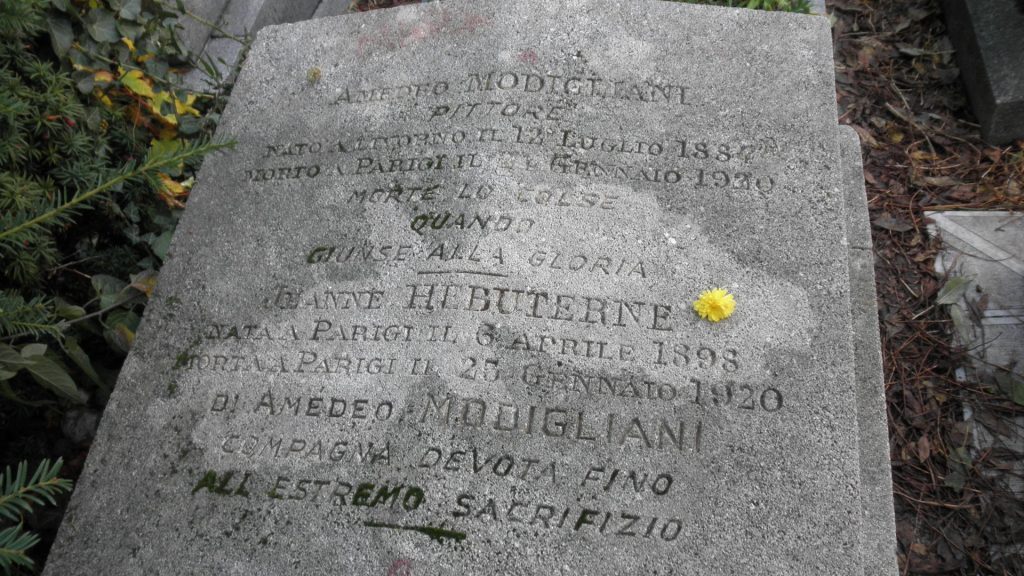
Her daughter with Modigliani, Jeanne, was adopted by Modigliani’s sister and grew up in Italy knowing very little about her parents. Later, as an adult, she began researching their lives and wrote her father’s biography, in English, the book is named Modigliani: Man and Myth.
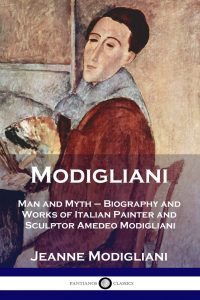
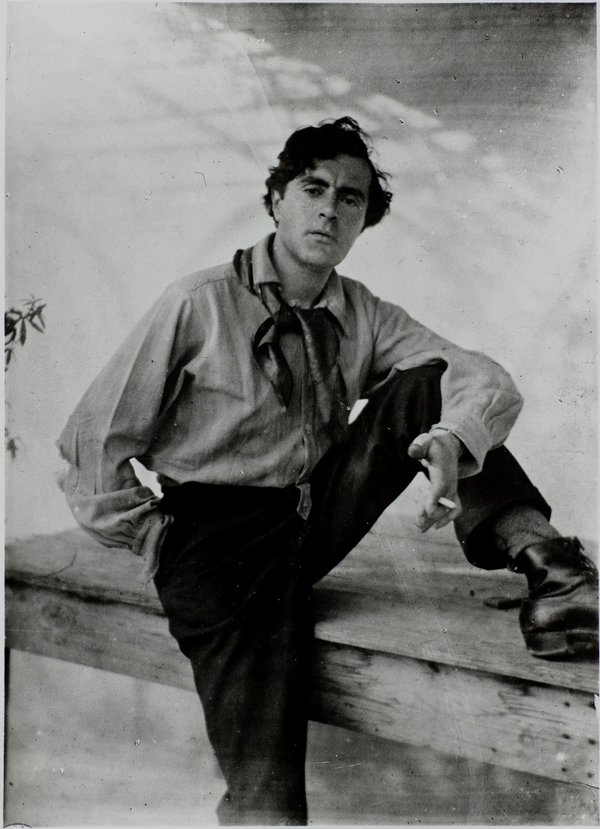
Amedeo Modigliani 12 July 1884 – 24 January 1920
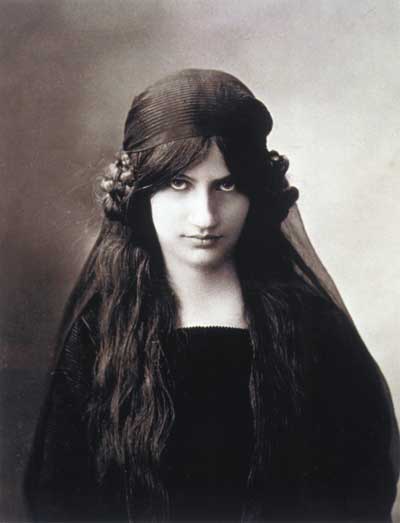
Jeanne Hébuterne 6 April 1898 –26 January 1920

